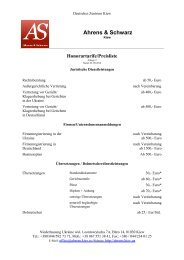ФІЛОЛОГІЯ XXI СТОЛІТТЯ: ТЕОРІЯ, ПРАКТИКА, ПЕРСПЕКТИВИ
ФІЛОЛОГІЯ XXI СТОЛІТТЯ: ТЕОРІЯ, ПРАКТИКА, ПЕРСПЕКТИВИ
ФІЛОЛОГІЯ XXI СТОЛІТТЯ: ТЕОРІЯ, ПРАКТИКА, ПЕРСПЕКТИВИ
Create successful ePaper yourself
Turn your PDF publications into a flip-book with our unique Google optimized e-Paper software.
These are new words formed from English morphemes independently<br />
from an analogous English construct and with a different intended<br />
meaning. For example, in German ‘Oldtimer’ (‘стара модель<br />
автомобіля’) refers to an old car (or antique aircraft) rather than<br />
an old person (‘ветеран’), while ‘Handy’ (‘мобільний телефон’)<br />
refers to a mobile telephone.<br />
Thus, ‘false friends of translators’ combine both partial<br />
internationalisms, and pseudointernatsionalisms. It can be asked<br />
how one (Ukrainian) can handle ‘translator’s false friends’. There is<br />
still no definite answer to the question despite the amount of research<br />
done on it. In fact, the most suitable solution to the problem seems<br />
to be in the person’s/translator’s own hands. On seeing an unknown<br />
or ambiguous word in the text, one should consult a dictionary as<br />
long as it is possible; however, it is even more advisable to constantly<br />
improve one’s vocabulary and extralinguistic competence. Paying<br />
special attention to the context also proves to be helpful in most<br />
cases. Moreover, although the coverage of lexical combinability is<br />
insufficient in most bilingual dictionaries, the translation problems<br />
caused by it are easily surmounted by a person’s/translator’s linguistic<br />
feeling that may be either ‘inborn’ or developed through continual<br />
practice and learning.<br />
In recent decades the trend of converging of the international<br />
terms meanings and gradually overcome of the semantic differences<br />
is more and more visible. This process will be long, moreover, it is<br />
impossible to get rid of ‘false friends of translators’ finally, but it is<br />
very real to build and set standards of the new terms.<br />
LIST OF LITERATURE<br />
1. Braun P. Internationalisms: identical vocabularies in European<br />
languages, language adaptation. – Cambridge: Cambridge University<br />
Press, 1989. – 250 p.<br />
2. Hawkins J.A. A comparative Typology of English and German:<br />
Unifying the Contrasts. – London, 1986. – 248 p.<br />
3. Акуленко В.В. Интернациональные элементы в лексике<br />
языков. Национальное, интернациональное в литературе, фольклоре<br />
и языке. – Кишинев: Штлинца, 1971. – 328 c.<br />
4. Будагов Р.А. Человек и его язык. – М.: Издательство МГУ,<br />
1974. – 260 c.<br />
5. Лоте Д.С. Вопросы заимствования и упорядочения<br />
иноязычных терминов и терминоэлементов. – М: Наука, 1961. – 174 c.<br />
146



